Selcouth Chronicles Week 26
Hello family and friends! Welcome to week 26 of the Selcouth Chronicles.
Week 26: June 30 - July 6
June 30: Thirsk -> 🚗 Berwick-upon-Tweed 🚗 ->Edinburgh
July 3: Edinburgh🛫 ->🛬 Dublin
July 6: Dublin -> 🚗 Hill of Tara 🚗 ->Skerries
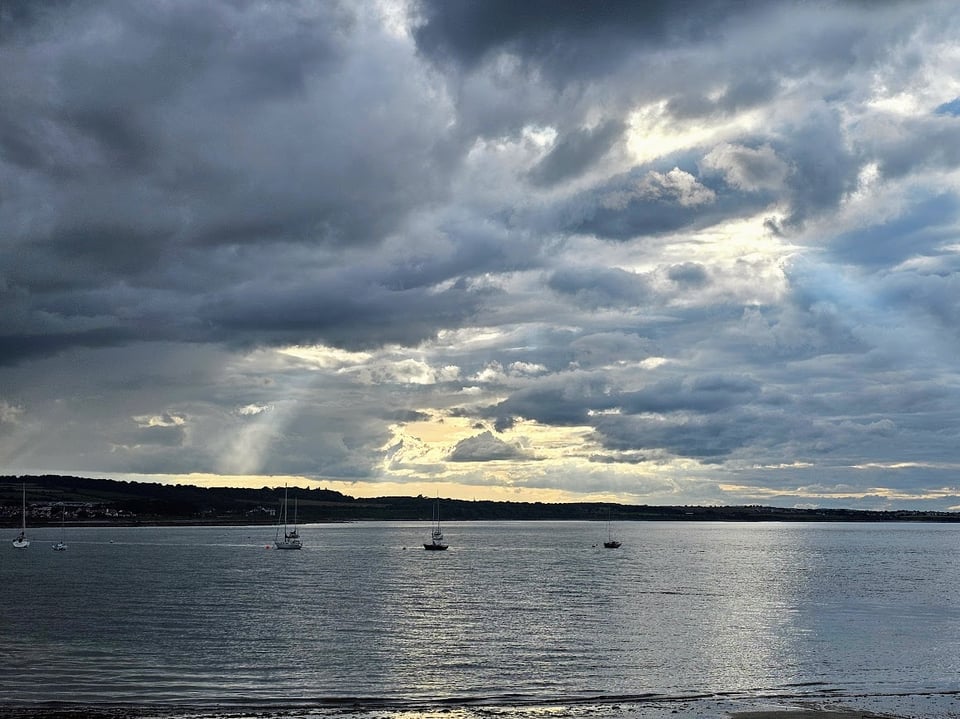
SCOTLAND AND IRELAND
Highlights: Edinburgh Castle, Victoria Street, St. Giles’ Cathedral, Scotch Whisky Experience, Writers’ Museum, Trinity College, Books of Kells Experience, walking Dublin, Viking Splash Tours, Irish pubs, traditional Irish music, kids getting pouring lessons from our bartender, Hill of Tara
Abby:
Welcome to our last week outside of North America! We woke up on Sunday to say a bittersweet goodbye to Thirsk. We stopped for lunch at a town called Berwick-upon-Tweed, which I think is an adorable name. We walked along the old fortress walls of the city and took in nice views of the ocean. The lunch we had was very delicious, at a cute little cafe on the waterfront. Eventually we had to get going, and we finished our drive to Edinburgh, Scotland. We dropped off our rental car at the airport and took an Uber to our hotel. The kind staff gave us ice cream while we were waiting in the lobby! For dinner we had canapes (small snacks) at the lounge, before taking a walk around town. We first went to Victoria Street, which was the inspiration for Diagon Alley in Harry Potter - some parts of the books were written at Elephant House, a cafe on this street. We also stopped at a statue of a dog named Greyfriars Bobby. The story is that he was a dog who loved his owner so much that when the owner died of tuberculosis Bobby guarded his grave for 14 years, until his own death. Now we pay tribute to Bobby by patting his nose when we walk by.
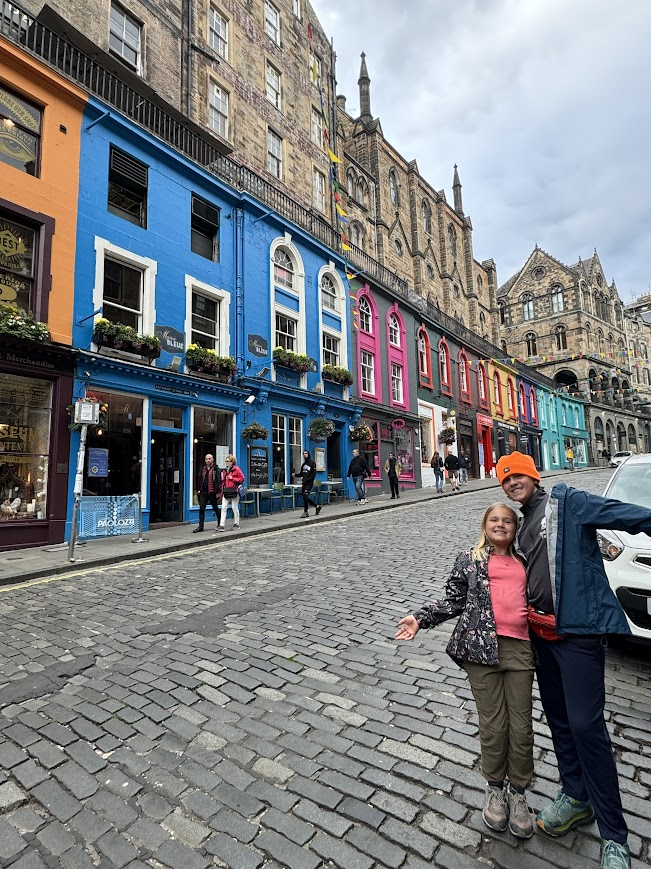
On Monday we went to one of Edinburgh’s most famous sites: Edinburgh Castle. During our ticket time we got to see the One o’clock Gun. It sounds and looks like a cannon, but nothing is in it except gun powder. The gun was originally fired to help sailors know what time it was, but why 1? Why not 12? This is because it is much cheaper to fire one shot than twelve shots! At the castle, we also saw the National War Museum, which had many interesting paintings, photos, and other items. We also saw Scotland’s Crown Jewels, which I think were cool, but less impressive than England’s Crown Jewels that we saw at the Tower of London! 😆 After the castle we went to a place called Oink for lunch to get pulled pork sandwiches because we had seen it on the show Somebody Feed Phil, and they were delicious! Dad had to go back to the hotel after that, but Mom, James and I headed to some museums. Unfortunately, both were closed by the time we got there, since they closed early and we were too slow. Instead, we went to St. Giles’ Cathedral. While we were sitting down and taking in the nice stained glass, we talked about how Scotland might be the only place we’ve been that had revolutions but is still under the control of the United Kingdom.
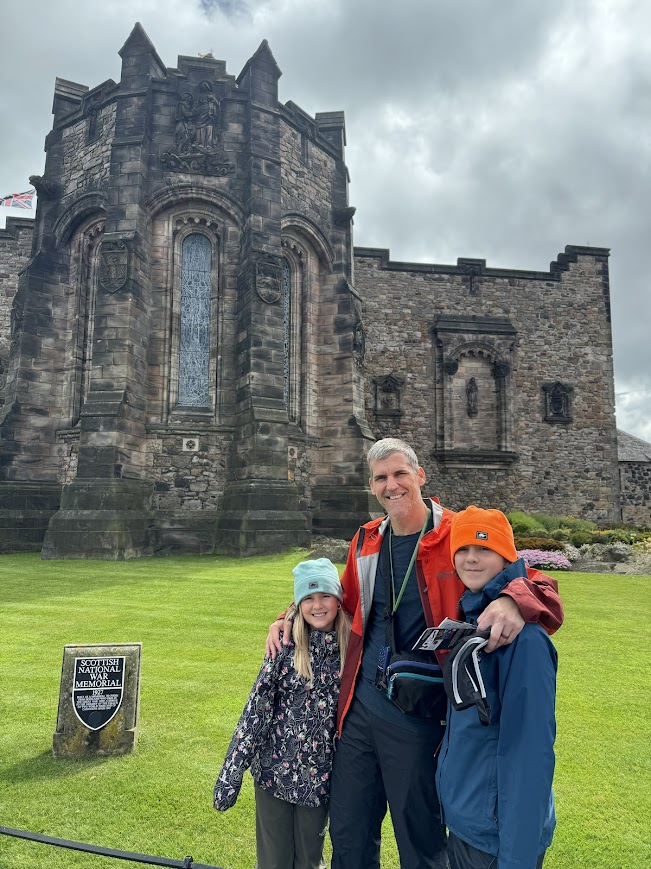
The first thing we did on Tuesday was called the Scotch Whisky Experience. I thought it was pretty cool, but James and I only got a popular soft drink in Scotland called Irn Bru, and I didn’t think it was very good. Afterwards, we had a late lunch at a place called Makars Gourmet Mash Bar. You get one chosen type of meat, and a ‘mash’. For example, I got lamb with bacon and onion mash. After a delicious lunch, Dad had to leave for work. Meanwhile, Mom, James and I finally went to the Writers’ Museum, which was filled with stories about famous Scottish writers such as Sir Walter Scott, Robert Burns, Robert Louis Stevenson. After that we decided to head back to the hotel to pack.
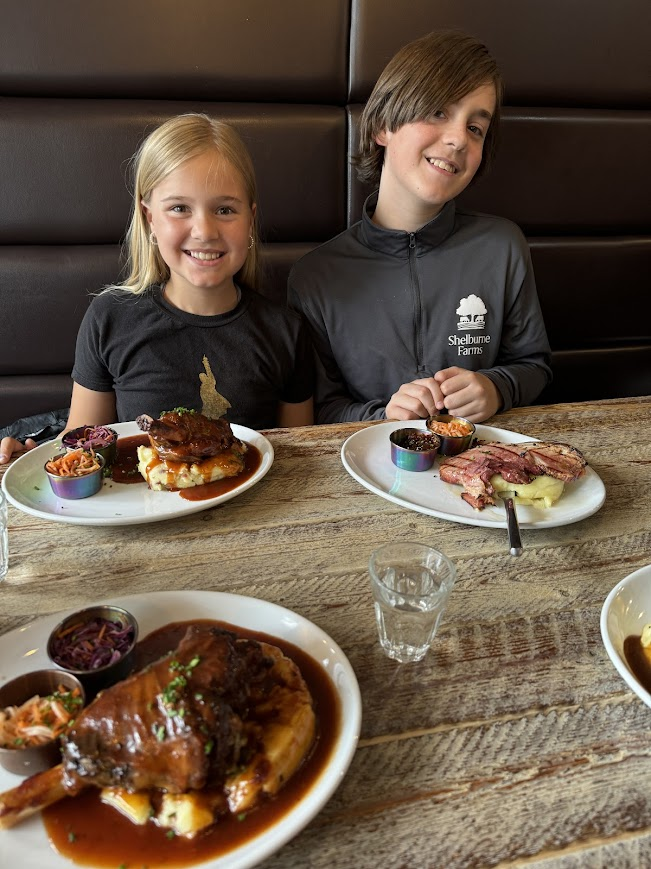
We started Wednesday morning packing for the plane ride that was a few hours later. Since it was our first flight in a long time - since Rome - we were very conscious about what we put in the bags, because they had to get through security. Luckily the flight wasn’t too long, and we got to Dublin in less than two hours. We checked in and had dinner at a restaurant in the hotel and headed to bed to be ready for a long day on Thursday.
We woke up on Thursday and had a big breakfast at the hotel. We headed to Trinity College, which houses the Book of Kells. (More on Trinity College in James’ section!) After a tour of the grand college, we went on a Rick Steves audio tour of Dublin. It included the Bank of Ireland, the former Parliament House, the famous statue of Molly Malone, City Hall, and Dublin Castle. Apparently, the water that used to surround the castle was called the Black Pool, which translates to Dubh Linn in Gaelic, and that is how we got the name Dublin! We stopped for a quick lunch at a café, then went to Christ Church Cathedral, which is almost 1,000 years old.
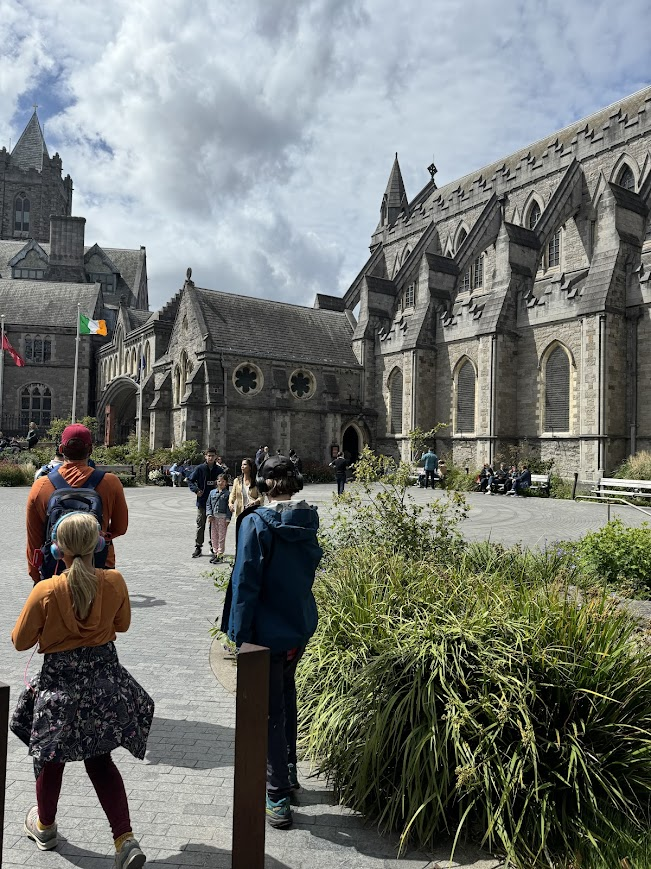
Just a few steps away is Fishamble street, which used to be inhabited by the Vikings. We kept walking until we got to the River Liffey. From there we took a walk to Temple Bar, a very touristy and overpriced area that is famous for its bars and nightlife. Finally, we saw two bridges: the Millenium Bridge and the Ha’Penny Bridge, which got its name because when it was built you had to pay half a penny (a ha’penny) to cross the bridge.
We started Friday with a really funny tour on a duckboat, called the Viking Splash Tours. It was tacky but hilarious and we had lots and lots of fun learning about the city and yelling Viking roars at innocent passers-by. When the tour was done, we headed to National Museum of Ireland – Archaeology, where among other things we saw what I think are disgusting “bog bodies” – search it up. Afterwards we had lunch at a pizza place with a line out the door, then we walked up Drury Street and over to a very nice bookstore called Hodges Figgis. After buying a book we decided to get some gelato and then walked to Merrion Square Park to see the Oscar Wilde Monument. Then we went across the street to the National Gallery to look at their artwork – I especially liked their Irish Stained Glass room.
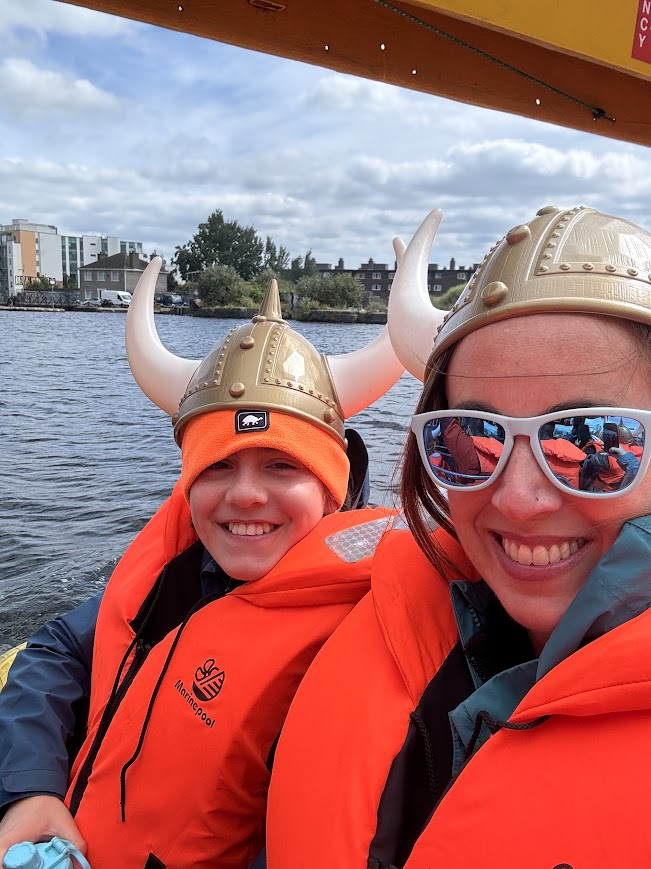
The last thing we did on Friday was go to a pub called O’Donoghues Bar, where we had a fantastic bartender who was really nice to me and James. We were there to listen to some traditional Irish music, called “trad” for short, which James was very excited to hear. Before we left, our bartender taught James and me how to pour a pint of Guinness.
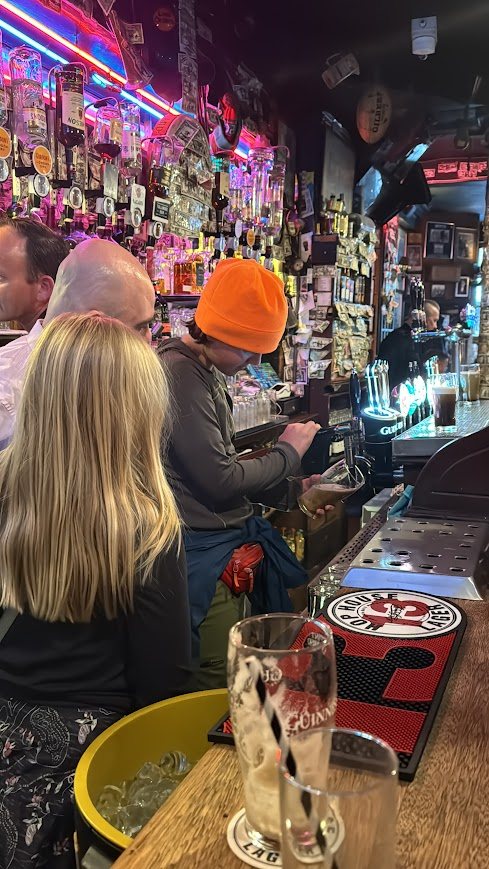
On Saturday we had a slow breakfast, then picked up a rental car so that we could drive to Skerries, a seaside town close to Dublin. Before going there, we drove to the Hill of Tara, which Dad is writing about this week. It is thought to be the most sacred place in Ireland, and I thought it was cool, but mostly I liked the pretty scenery. We had some delicious pizza bagels before driving the rest of the way to Skerries. We unpacked our stuff at the Airbnb and headed to our dinner reservations at the Blue Bar. Afterwards we got some (huge) ice cream sundaes and went to bed very full.
We have less than four weeks left on our trip and I am very excited to say hi to our friends in San Jose when we get home!
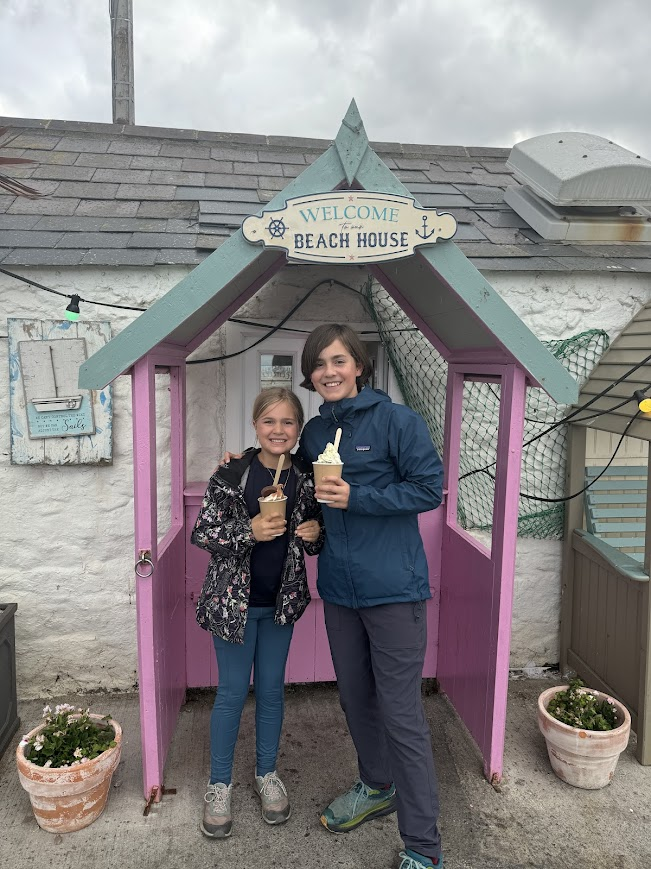
Sean:
As we made our way around Dublin, enjoying the vibrant city and its generally affable people, it’s easy to forget that Ireland has a history that stretches back into the mists of ancient history. This manifests in different ways - think leprechauns and fairies - but in the center of the myths and legends of the country is the Hill of Tara. We made our way there this week as we moved from Dublin to the coastal town of Skerries.
The Hill of Tara is a surprisingly nondescript area as you approach, considering the historical significance of the location. Here was the seat of the High Kings of Ireland. Our guide indicated that it’s believed that 142 kings were crowned at the site, though there isn’t a clear way to confirm this outside of stories written in ancient times. What is definitely known is that there is a passage tomb, called the Mound of the Hostages, on the site that dates back to somewhere between 3500 and 3000 BC. Neolithic Irelanders considered the Hill sacred and those of high standing (kings, noblemen, etc.) were buried at the tomb and other areas around the Hill. The tomb was unfortunately closed the day we were there, but we could look inside the door at the spiral art carved into the walls of the tomb thousands of years ago.
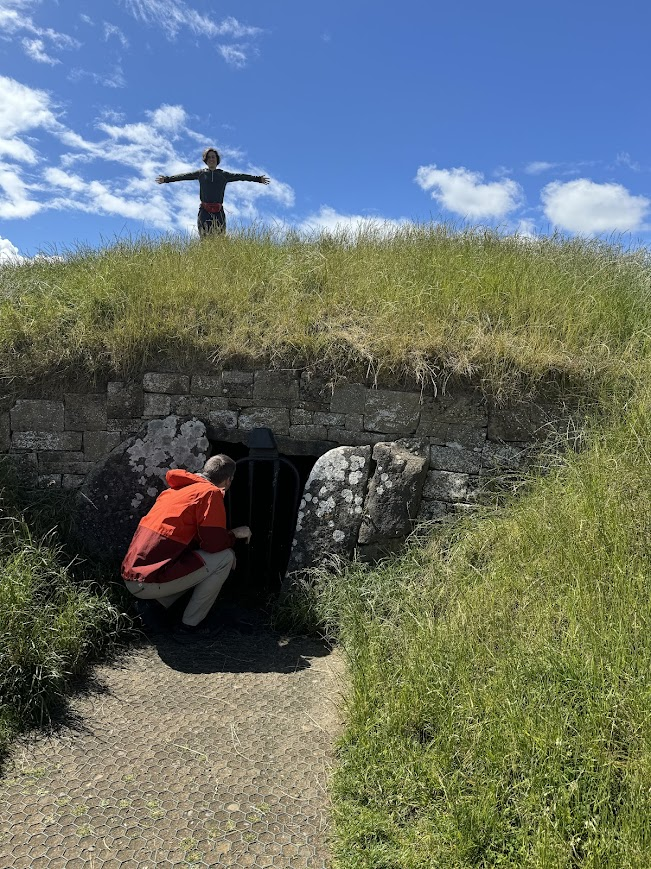
Before you make it up the hill where the tomb can be found, you first walk up to a statue of Saint Patrick. We all know St. Patrick from his very global and strangely secular holiday, but his story is rooted at the Hill of Tara. Patrick lived in Ireland in his teen years, after being captured by Irish pirates. He was able to escape back to Britain after six years, where he trained as a cleric. Later, Patrick decided to return to Ireland to spread Christianity. In the 5th century he returned to Ireland and lit a fire for Easter outside of Tara. The pagan druids and Irish King lit bonfires on the hill, as it happened that a pagan holiday coincided with Easter. When they saw Patrick’s fire, they demanded that he be brought to the hill. The legend says that the druids summoned fog ( or maybe snow or some other bad weather), but Patrick prayed and the hill was cleared. The statue of Patrick on the hill has him holding a clover, because the other part of the legend was that he used the shape of the clover, with its stem and three leaves, as a way of explaining the Holy Trinity to the pagan King. Thus it is believed that the future saint turned the country to Christianity in the 5th century, cementing a significant part of their identity for centuries to come.

With the change to Christianity, the Hill of Tara lost its religious significance, but remained an important site for royalty and status. The true extent of the monuments and buildings on the Hill is unknown; though there are locations on the surface, such as the Mound and the Stone of Destiny, which was believed to make a sound when the future King would lay their feet upon it, much of the history of Tara is hidden underground. The government of Ireland has initiated a non-invasive approach to scanning the ground using modern technology, but this doesn’t allow for carbon dating or some of the other mechanisms needed to get the full picture of how the hill was used 5000 years ago. Regardless, standing on the Hill looking out over much of the country, one can feel the history and power of the location. Knowing that before the Iron age, before the Bronze age, stretching back beyond the Romans, the Old Kings of Ireland stood on the Hill of Tara and the Druids had their ceremonies to honor their dead, was an incredible experience.
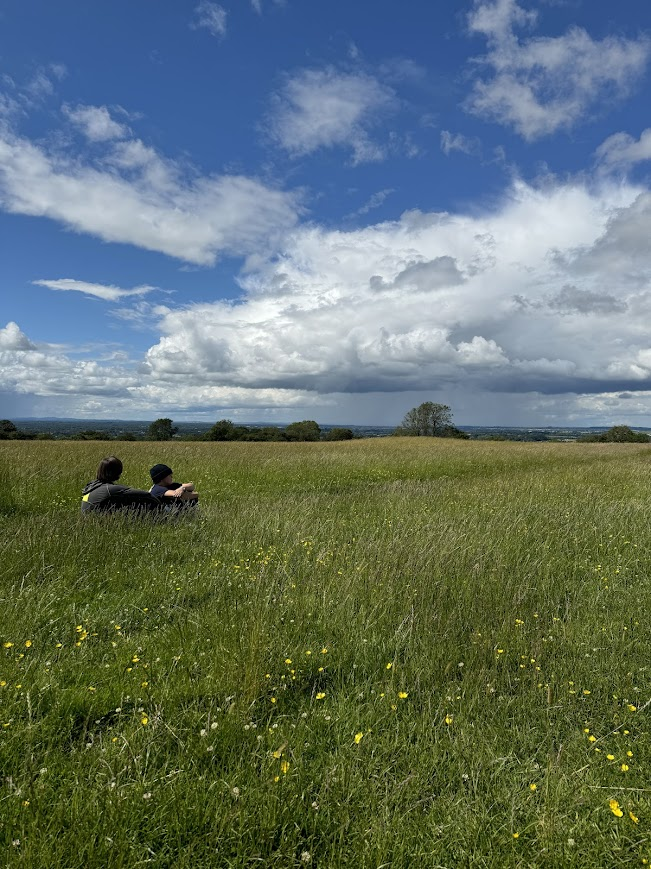
James:
School is one of the most important things in my life. I make friends there and I learn there. I couldn’t imagine my school being like Trinity College Dublin, because it is both a place that people come just to visit as tourists and also a place for study.
Trinity College is the most famous school that I’ve ever visited. Its history is brimming with details upon details and its architecture is picturesque. The architecture is a melting pot of different styles and designs that have been adopted over time. The school was founded in 1592 by Queen Elizabeth I, at a time when Ireland was under the control of Great Britain. At first the school was only Protestant, until 1793 when Trinity finally relaxed its strict anti-Catholic rules. Unfortunately, the Catholic church would not allow Catholics to attend, afraid that the school would “corrupt” the students and convert them into Protestants. The Catholic Church would on very rare occasions allow “incorruptible” Catholics to attend, but only with a letter from the bishop. This went on until 1970 when the ban was lifted. However, there was still one divide to clear: gender. Women were, under no circumstances, allowed in. In fact, one Provost, George Salmon, said that women would be admitted, “over my dead body.” As fate would have it, the very day of Provost Salmon’s funeral in the chapel (nicknamed Heaven) on campus, the woman who would become the first female student sat - and passed - her entrance exam in the exam hall (nicknamed Hell). In the center courtyard, there is a statue of the unpopular Provost, and whenever a woman graduates from Trinity, it is a tradition to go over and give it a mocking kiss on the cheek.
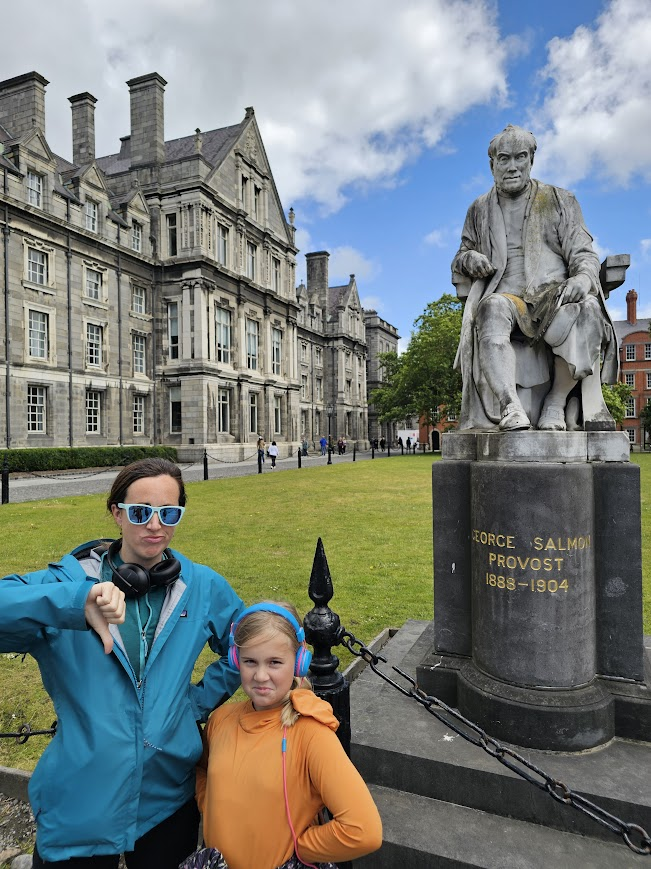
Another interesting tradition at Trinity is an almost unpassable test. It’s such a brutal exam that of the thousands of students that take it, only about thirty pass each year, even though it only requires a 70% grade to be considered a pass. In most schools, this is a C-minus, but that’s how hard this exam is. However, the payoff for students who pass is incredible! The select few receive free accommodation, free evening meals, free tuition, and a small annual stipend for five years, including any post-graduate degrees. It’s a pretty great deal!
On the other hand, these benefits are for students only, so why do so many tourists come? The main draw is the library, of course! It is Ireland’s largest research library and has a very rich history! It is a legal deposit library, which means that it is entitled to a free copy of every book that is published in Ireland and the UK. As a result, it receives over 100,000 new items every year. As of now, the library has over five million books, including ancient manuscripts, sheet music, and medieval maps. If I could, I would live there.
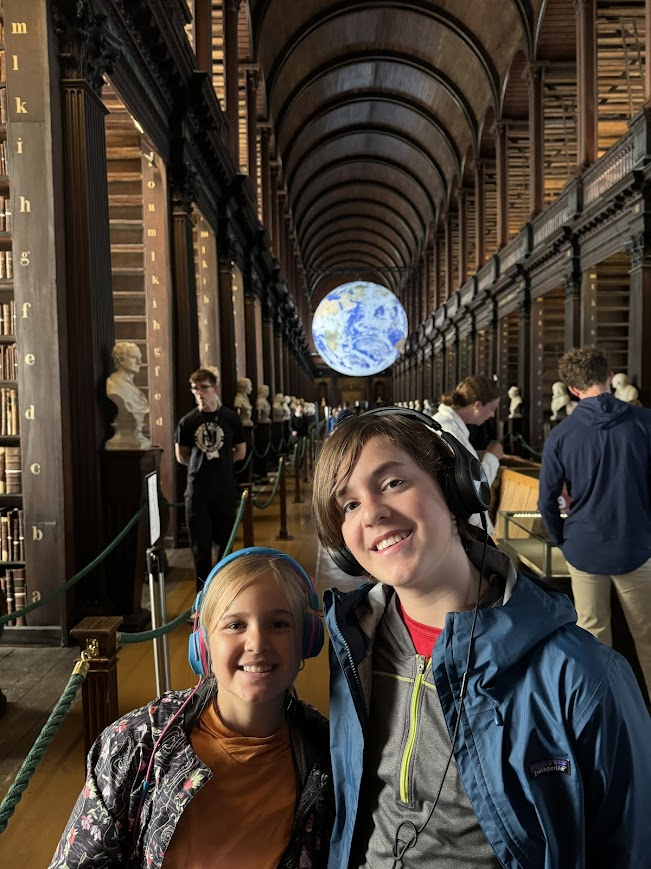
The most famous book in the library collection is the Book of Kells. The Book of Kells is a copy of the four Gospels in the New Testament. It was started in the 500s by a group of monks on the isle of Iona in Scotland. But the monks had to move the book to Kells, Ireland, to avoid Viking raids where it was finished sometime in the 800s. Although it was finished, it was still not safe, and it was moved to Trinity in 1661 so no harm would befall it. The book has remained at the school ever since. You can see it through a glass display case in a dark and dramatic room. It’s not just famous for its writing, it is also famous for its illustrations. The monks who worked on it held nothing back with their colors and flair. They change the pages on display and unfortunately the pages we saw weren’t the most elaborate, but the exhibition showed some of its better parts to us.
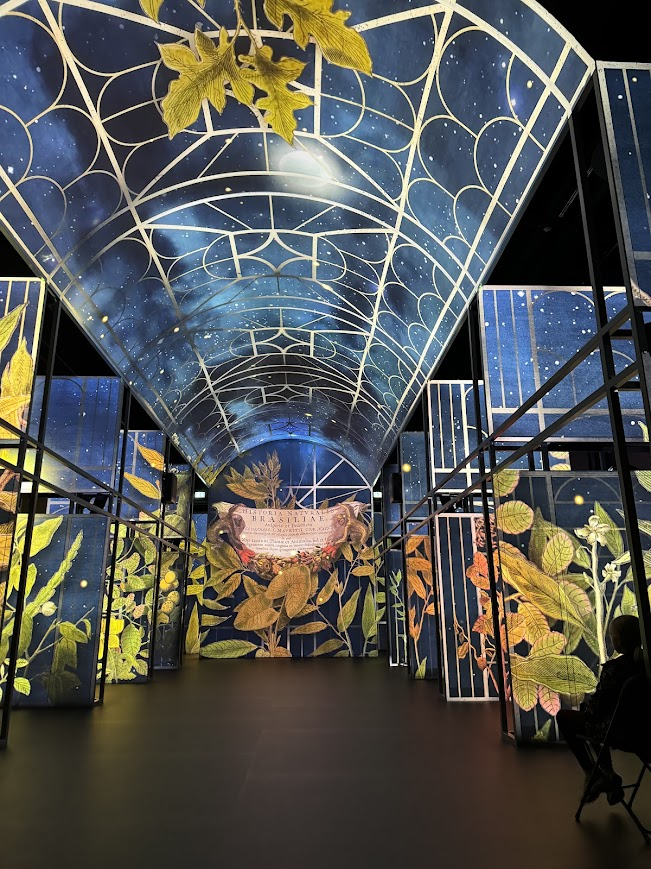
On the other hand, the library doesn’t have just books. One important item in the collection is the 1916 Proclamation of the Irish Republic. It also has a harp: more specifically, it has the Brian Boru harp, one of only three ancient Gaelic harps that survive to this day. This harp is the inspiration for the Guinness logo and is the national symbol of Ireland. It was very interesting to look at with its dark wood and silver strings. I’d sure love to hear someone play it.
Our time at Trinity College was quite fascinating, even though I have seen a lot of ancient buildings at this point. Trinity College is the first school that I have seen on this trip, and it was a very educational experience. Get it? 😆
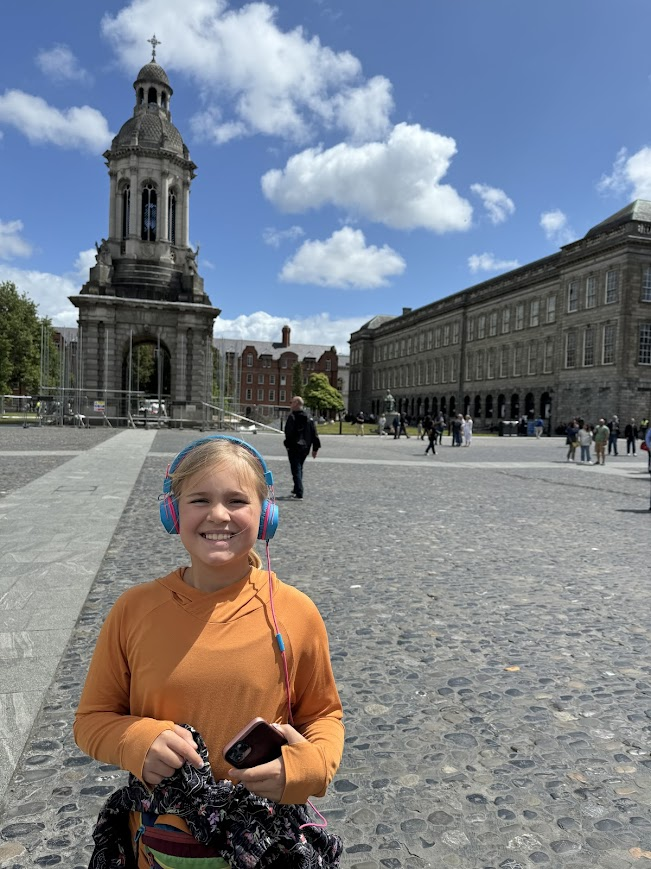
Caitlin:
Most of the time I go out of my way to make sure that everything we have planned is either for the whole family or for the kids; we do everything together and there’s no point in dragging them to experiences that they can’t participate in or won’t enjoy. This week, we managed to slip in one activity that was definitely for adults: the Scotch Whisky Experience! I’m not a whisky expert, but I do enjoy a taste and the tour sounded fun. When in Scotland, right? First things first: in Ireland and the US we have whiskey, but in Scotland it’s whisky. The difference comes from the pure water that is used in the distillation process. In Latin, this was referred to as aqua vitae, meaning ‘water of life.’ This phrase translated to ‘uisge beatha’ (in Scottish Gaelic) and ‘uisce beatha’ (Irish Gaelic). The phrases became more anglicized during the medieval period, then abbreviated, until they became “usky” or “usque.” The abbreviated versions, in turn, morphed to whiskey in Ireland and whisky in Scotland.
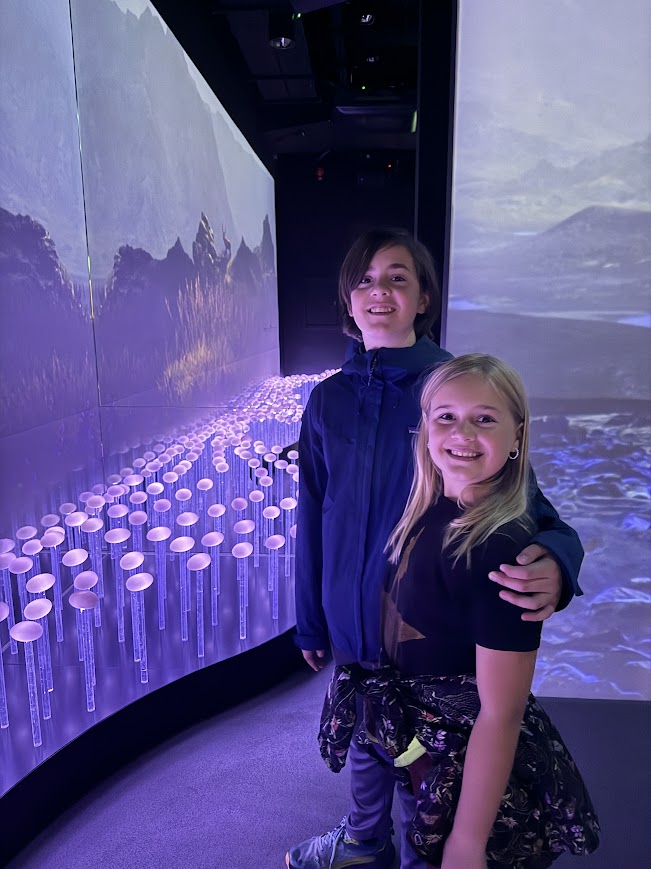
Scotch whisky, we learned, is made from barley grains soaked in water. The pure quality of the water is very important to the process and final flavor. The barley is malted (to germinate and convert its starches to sugar), dried (to halt germination), mashed (ground into flour and heated in water), and then fermented via the addition of yeast. The liquid is then added to pot stills for distillation. Most distilleries have their own unique shapes for their pot stills and claim that the varying shapes affect the taste and quality of the final product. The liquid is distilled twice: once to roughly 20% alcohol by volume, then a second time which should result in about 68%. Later, the whisky is moved to oak casks to mature. By law, to be called Scotch whisky three conditions must be met:
The whisky must be matured for at least three years (though most single malts stay in their casks for significantly longer)
Production and maturation must take place in Scotland
Single malt whisky (vs. a blend) must be made completely from malted barley
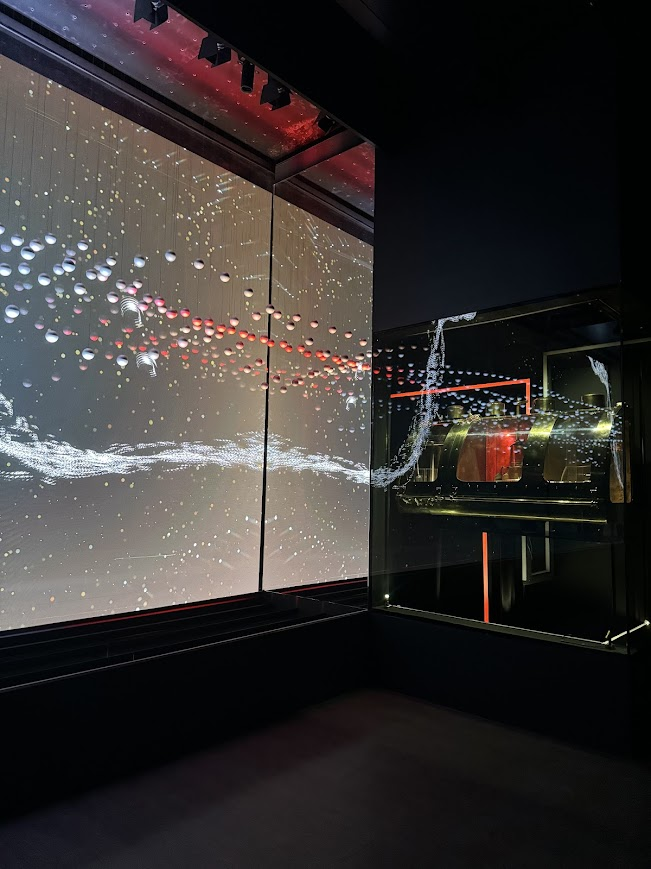
On our tour, the whisky-making process was shown in various rooms using videos and lighting to make the learning process as fun as possible. Then we learned about the different whisky-making regions of Scotland: Lowland, Highland, Speyside, Islay, and Campbeltown. Across the country, there are around 130 distilleries. The geographic variations give each region distinct flavor profiles, and we were given scratch-and-sniff cards to give us an idea of what to expect from each one, in order to decide what whisky we’d like to try at our tasting.
Finally, we were given our samples of choice: a Speyside for me, Campbeltown for Sean, and bottles of Irn-Bru for the kids, which is a soft drink often called “the other national drink” of Scotland. Before tasting, the group went to a room which houses The Collection, formerly the private collection of a single man, comprising 3,384 bottles of whisky. It was an impressive display, which made a fitting backdrop for the tasting. Sean, who has never been a whisky fan, didn’t love his vanilla and caramel selection. I, however, quite liked my Speyside option, which had notes of fruit and cinnamon… according to the tasting card, at least. My palate isn’t refined enough to distinguish those subtleties, but I was able to enjoy it all the same. Slàinte mhath!
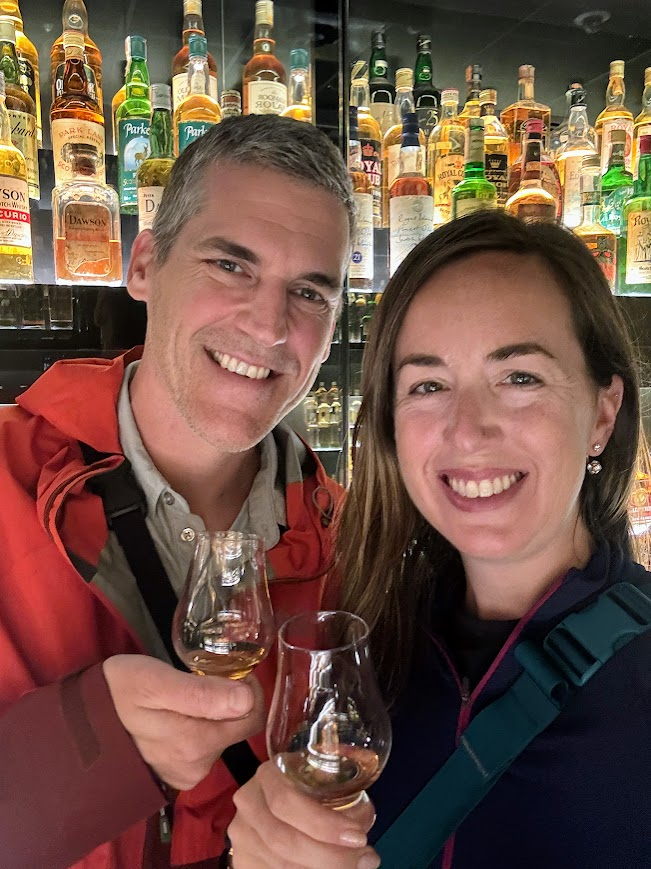
See you next week!
Sean, Caitlin, James, and Abby
Catching up? Read week 1, 2, 3, 4, 5, 6, 7, 8, 9, 10, 11, 12, 13, 14, 15, 16, 17, 18, 19, 20, 21, 22, 23,24, or 25.